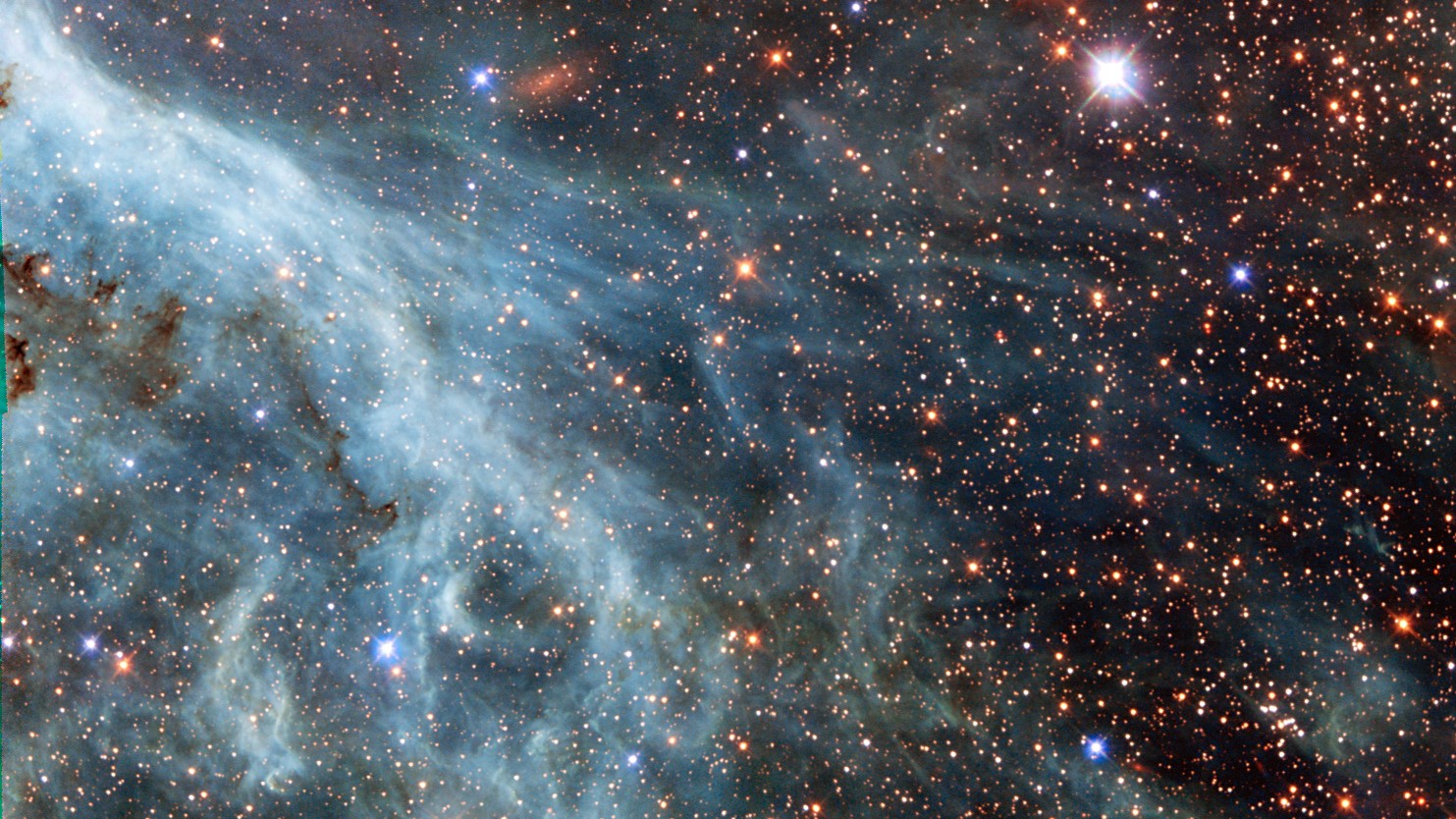Gorgeous Hubble Space Telescope image shows turquoise waves rippling through Milky Way companion

Bright turquoise plumes ripple through the Milky Way's companion galaxy, the Large Magellanic Cloud, like waves in the ocean in a spellbinding new view shared by NASA.
The venerable Hubble Space Telescope captured this stunning view of the Tarantula Nebula, which is within the Large Magellanic Cloud (LMC), a satellite dwarf galaxy of the Milky Way located about 163,000 light-years from Earth. The LMC is among the closest galaxies to Earth and is visible to the naked eye as a faint cloud in the Southern Hemisphere sky.
The photo, taken by Hubble in 2014, captures bright, glowing plumes of gas and glittering stars. The turquoise plumes and nebulous strands of the Tarantula Nebula appear to flood the LMC like ocean currents cascading into space.
Related: The best Hubble Space Telescope images of all time!
"The Hubble Space Telescope has peeked many times into this galaxy, releasing stunning images of the whirling clouds of gas and sparkling stars," NASA officials wrote in a statement.
However, "in most images of the LMC the color is completely different to that seen here," the statement says. "For this image, researchers substituted the customary R filter, which selects the red light, and replaced it by a filter letting through the near-infrared light. In traditional images, the hydrogen gas appears pink because it shines most brightly in the red. Here, however, other less prominent emission lines dominate in the blue and green filters."
This image of the LMC was taken as part of an initiative called the Archival Pure Parallel Project (APPP), which comprises more than 1,000 images taken using Hubble's Wide Field and Planetary Camera 2 and the telescope's other science instruments.
Get the Space.com Newsletter
Breaking space news, the latest updates on rocket launches, skywatching events and more!
In turn, the APPP data can be used to study a wide range of astronomical features and effects, including gravitational lensing, cosmic shear, stars of varying mass, and distant galaxies. The data can also be used to supplement observations collected in other wavelengths to paint an even more detailed view of the cosmos.
Follow Samantha Mathewson @Sam_Ashley13. Follow us on Twitter @Spacedotcom and on Facebook.
Join our Space Forums to keep talking space on the latest missions, night sky and more! And if you have a news tip, correction or comment, let us know at: community@space.com.

Samantha Mathewson joined Space.com as an intern in the summer of 2016. She received a B.A. in Journalism and Environmental Science at the University of New Haven, in Connecticut. Previously, her work has been published in Nature World News. When not writing or reading about science, Samantha enjoys traveling to new places and taking photos! You can follow her on Twitter @Sam_Ashley13.









